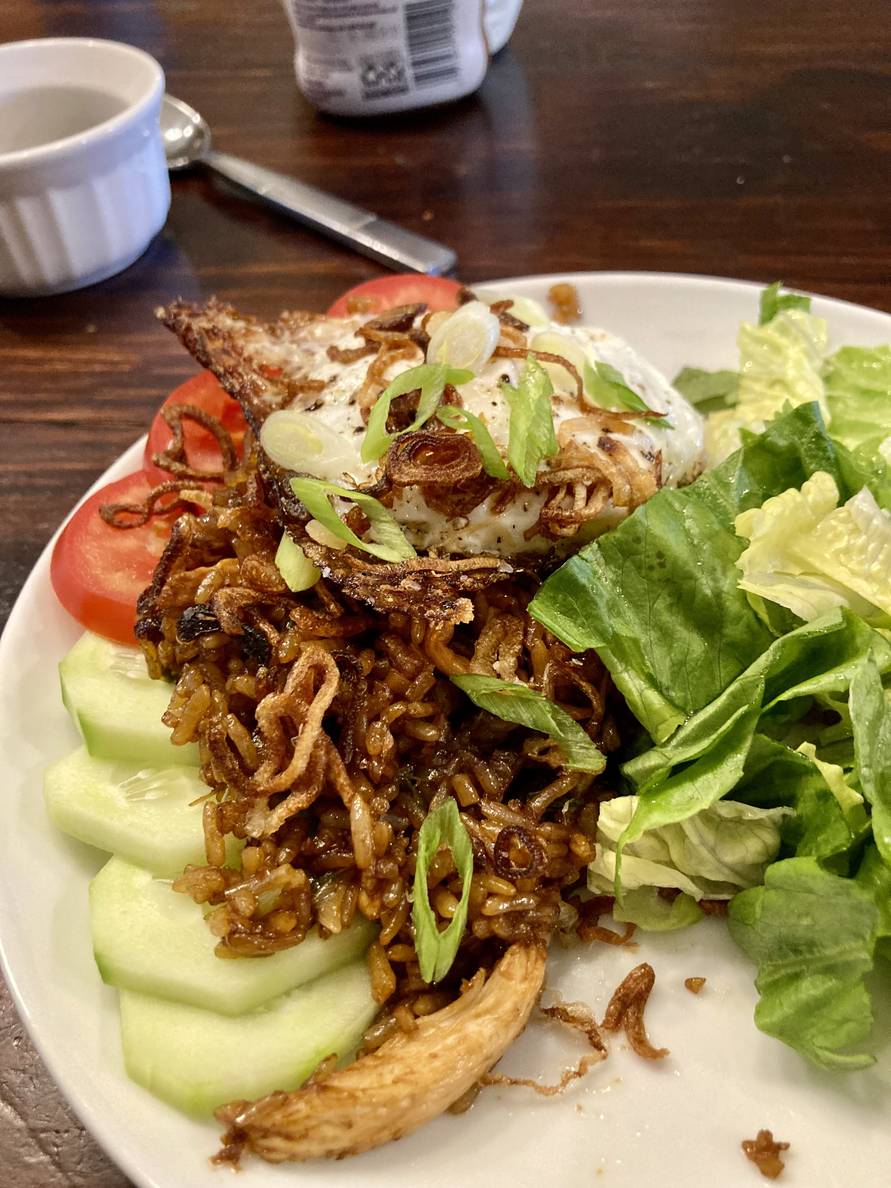Yesterday I made the Nasi Goreng: The Funkiest of Fried Rices recipe from J. Kenji Lopez-Alt’s The Wok cookbook.
A couple of ingredients are notable from this recipe: “terasi, belacan, or other Asian shrimp paste” and kecap manis. The shrimp paste is what’s supposed to give this recipe it’s funk. I used Thai shrimp paste (gapi) that I keep on hand for making Thai curry paste, for which it is a common ingredient. I’ve never had kecap manis before. Kenji has a recipe for Homemade Kecap Manis, which I made on Sunday in preparation for this dish.
In addition to making the kecap manis ahead, I also went ahead and fried shallots and made the spice paste on Sunday. Kenji notes that nasi goreng recipes “are all over the map, but the most delicious (and interesting) technique I've seen was from Indonesian Serious Eats contributor Pat Tanumihardja, who makes hers by first pounding some aromatics into a curry-like paste in a mortar and pestle.” It’s a paste made from shallot, garlic, Thai chiles, salt, and the shrimp paste.
The dish starts with frying the spice paste in some oil, then adding some optional shrimp or shredded chicken (I chose chicken). Once that’s done, it’s removed to a bowl. Then the rice is stir-fried, then the protein and paste mixture is returned. Finally the kecap manis is added with scallions. The fried rice is topped with a crispy fried egg and fried shallots.
Megan and I both thought the nasi goreng was delicious. I found the kecap manis to be dominant with a slight heat from the Thai chiles. I did not notice the shrimp paste, but perhaps we’re used to it from our Thai curries. The kecap manis flavor reminded Megan of Thai pad see ew, a rice noodle dish stir-fried with Thai black soy sauce, which I can see having similar flavors to the kecap manis.
I’ll make this one again!

I am cooking my way through J. Kenji Lopez-Alt’s The Wok cookbook. Read more about it.
